- Home
- T. J. English
American Gangsters Page 9
American Gangsters Read online
Page 9
In the months before that afternoon, those acquainted with the brothers had become even more aware than usual of the tension between them. It was the worst kept secret in San Francisco. Their relationship had always been fractious—the legal trouble and other distractions inherent in their business, along with each brother’s divorces and reconciliations, saw to that. Lately, the tension centered mostly on Artie’s social habits. In late 1990 and on into this year, he had been drinking heavily and getting stoned more than ever. Jim frequently expressed his concern about Artie to his friends, and no one doubted Jim’s wish to get Artie into a rehab center for the younger brother’s own sake. But Jim had also recently begun pressuring Artie to divest himself of his share of the business. Still, no one who knew them well would have believed that their disagreements would come to a bad end. Especially not to the particular bad end that awaited them.
When I finally got Jim Mitchell to sit down and discuss the details of my book proposal, I was surprised to find that he was now reluctant. Until then he seemed to like the idea of having a book written about the place. But as I explained my plan—to chronicle a year in the life of the O’Farrell Theatre—he became increasingly more uncomfortable and distracted. “Why would we want to call attention to ourselves like that?” he finally asked, adding mysteriously, “We have secrets, things I’d rather not have aired in public.”
One week after I last saw Artie Mitchell savoring toke after toke of northern California’s finest, he died in his home in Corte Madera, shot three times. The clincher was a .22 caliber bullet that entered through his right eye and pierced his brain. One block away from the house, police stopped and arrested Jim Mitchell, who was carrying a .22 rifle and a fully loaded .38 caliber handgun. Before the week was out, Jim would be charged with the premeditated murder of his brother.
The house on Mohawk Avenue where Artie Mitchell lived and died is a white stucco ranch house with sky-blue shutters and a picket fence. From the front window, you can see Mount Tamalpais, the highest point in Marin County. It is an unassuming house in a clean, middle-class neighborhood, not what you’d expect for the home of a “porn king.” Jim Mitchell lived across the Golden Gate Bridge in San Francisco—about thirty minutes by car—in an equally nondescript house in the Sunset District.
Although their business had been successful from almost the start, Jim and Artie never strayed far from their working-class roots. They grew up in nearby Antioch, at the time a dusty village of about 7,000 people, located on the Sacramento River Delta. Their mother, Georgia Mae, who would eventually hold an interest in her sons’ business, was once a schoolteacher. Their father, who died in 1973, was a professional gambler and grifter who sometimes handled security at local card games. “We were raised to be torpedoes against the state,” Artie used to say.
When the Mitchell brothers first began producing grainy, ten-minute skin flicks, or “loops,” in the early 1960s, the porn business was nearly invisible. What little industry there was existed in New York, the domain of men whose idea of what sex films should look like had been formed decades earlier. As with nearly everything in American culture, the 1960s brought big changes. An early, unmistakable sign of change in the porn business was Behind the Green Door, the first and one of the most profitable feature-length (seventy-two minutes, as opposed to its quickie forebears) “erotic” films. It cost $60,000 to make—a fortune for a porn flick at the time—but is reported to have grossed $50 million to $60 million, including bootleg versions.
Along with its higher-than-usual production values, the movie brought the promise of an entirely new, young sensibility to the industry. The star was nineteen-year-old Marilyn Chambers, whose angelic features had just graced boxes of Ivory Snow. She didn’t look anything like the leather-bound prostitutes or aging vixens who populated most porn films up to that time.
A young Jim and Artie Mitchell can be seen briefly in the film as a couple of hoodlums who abduct Chambers and bring her to a plush boudoir, where she is ravished by a succession of lesbians, a black stud, and three men seated on trapezes. The movie retained the traditional slow-motion shots of ejaculating male members, but it also took the time to focus on Chambers’s seemingly genuine orgasms.
Throughout the 1970s and into the 1980s, the brothers put their unorthodox stamp on film after film, including Autobiography of a Flea, Resurrection of Eve, and Sodom and Gomorrah, which, with a budget near $350,000, is believed to be the most expensive such movie ever made.
“The Mitchells were unique,” says Jared Rutter, former president of the now-disbanded X-rated Film Critics Association. “Their product seemed to come out of the sexual revolution of the 1960s and early 1970s. There was an emphasis on actual lovemaking. It was very Bay Area. Generally, they were seen as eccentrics by the rest of the business.”
While they were filming, the division of labor between Jim and Artie was often ad hoc. Jim had taken a few film classes at San Francisco State University and seemed more interested in the creative process, so he would usually direct. Nonetheless, there were inevitable disagreements.
Former porn star George McDonald, who appeared in more than twenty movies for the Mitchells in the early 1970s, remembers an almost comic lack of professionalism, despite the brothers’ reputation for putting out a relatively polished product.
“There were a lot of sharp words on the set,” says McDonald. “Sometimes it was funny. I’d be sitting on a bed naked, waiting for a scene to begin. Jim would be on one side of me and Art would be on the other, and I’d be getting conflicting directions on what they wanted. I’m sitting there trying to get it up and keep it up and I’d say, ‘Couldn’t you guys have worked this out ahead of time?’ ”
The Mitchell brothers changed the world of pornography, but they had been outstripped by changes. Their theaters and international film distribution sideline were made all but obsolete by the widespread availability of videos. Consumer demand did not materialize for the ambitious, big-budget porn films they wanted to continue making.
Their success had brought the brothers lots of attention, but more and more it was unwanted. They were forever defending themselves against obscenity and prostitution charges, mainly in connection with the inventive live shows that came to be their theaters’ main draws. Last year, one of their most profitable movie houses, located in conservative Orange County, closed down, the victim of a relentless antiporn crusade. Although the success of their operation over the years had exceeded their wildest expectations, Jim and Artie used to laugh at newspaper accounts that estimated their worth at $50 million. In 1988, even before their Orange County theater closed, accountants set the value of the corporation at $1 million.
Their business matured into a compact enterprise that practically ran itself, leaving Jim and Artie with time for other concerns. Over the years, Artie had married three times and Jim twice, and they had nine children between them. For a while, they ran a commercial fishing venture together, and at dawn they would rise with the children and spend the day out on a trawler.
“They were two of the most normal, family-oriented guys you could ever meet,” says Susie Bright, a friend of the brothers who publishes On Our Backs, a San Francisco–based lesbian sex and lifestyle magazine. “Jim was like Dad; Artie was like everybody’s favorite uncle.” Bright, thirty-three, is the typical kind of bohemian character the O’Farrell Theatre has always attracted. Her perky, in-your-face sexiness, combined with her stereotype-defying manner, she believes, is precisely why the brothers were so supportive.
“The idea of a lesbian sex magazine was right up their alley,” says Bright. “It totally fit with their mission of fucking with the status quo, of doing something as pornographers that was innovative, revolutionary.”
By then, however, their role as revolutionaries was mainly in an advisory capacity. Their business had become as middle-aged as they were.
“The brothers won a lot of legal battles,” says Warren Hinckle. “They’d stayed out of jail. After the Ma
rilyn Chambers victory, they seemed to get bored with the business. Jim started looking around for other things to occupy his days.
“And Artie? Well, Artie started looking around for a good time.”
The stories of Artie Mitchell’s wild behavior had always been part of the brother’s official legend. If he pulled out a gun and started firing around the office, well, that was just Artie. In his sober moments, he had such a charming, outlandish sense of humor that it was hard for some friends to take his darker side seriously.
But beginning in late 1990, Artie’s antics—once so rakish and infectious—developed a nasty edge. At the many lavish holiday parties the brothers would throw at the top of the theater, Artie had begun to go too far, groping women and insulting guests for no reason. An affidavit filed by one of Artie’s ex-wives during their bitter child-custody battle claimed he was “frequently under the influence with the children” and that he used cocaine, heroin, and psychedelic mushrooms. Three weeks before the shooting, Artie had walked into Maye’s Original Oyster House in the middle of the afternoon waving a loaded .38 caliber pistol.
The last time George McDonald saw Artie was on Valentine’s Day. That night, up in the office, Artie was in a bad way.
“He was slugging off a bottle of Stolichnaya,” McDonald remembers. “He was shooting pool, then he turns to me for no reason and says, ‘You know, me and my brother, we never liked you. In fact, get the fuck outta here.’
“I tried to ignore him, walked over and handed him a joint. Then I realize he’s gonna take a swing at me with the pool cue. I think, Oh, Jesus, is it really gonna come to that? So I duck. But I realize he’s so drunk he can’t stop his momentum. He’s gonna come around a second time. Finally, he caught himself. Ten minutes later, he’s curled up in the fetal position, snoring.”
Artie enjoyed the freedom to intoxicate himself regularly and misbehave partly because big brother Jim was the responsible one, the one who would keep the business running smoothly. He was also the one their friends would call with tales of Artie’s sometimes frightening wildness. By late last year, however, Jim seemed to have grown weary of his role as his brother’s keeper.
“One night, I was with Artie and Jim at a little party we had for a local boxer and a bunch of boxing writers,” recalls Bob Callahan, a Bay Area journalist and friend of the brothers. “And Artie was drunk and making an ass of himself, trying to pick a fight with this boxer. And I could see Jim was just heartbroken. You know, he never showed his emotions much. But he just looked at me and said, ‘God, it drives me nuts to see my brother like that. I built an empire with this guy, and now he’s like a Telegraph Avenue street babbler. He doesn’t understand how fucked up he is. He’s got to go into a hospital.’ And that’s when I knew Artie was really getting to him.”
In fact, Mitchell family discussions of Artie’s problem had often concluded with the thought that if he could only be coaxed away from the scene upstairs at the theater, he might finally seek medical help. It was under these pressures that the brothers had begun to dissolve their partnership. They had even gone so far as to begin the paperwork with Dennis Roberts, their attorney.
Jim also began looking for new challenges away from the theater. One outside endeavor he got involved with—sans Artie—was War News, an impromptu anti–Gulf War newspaper that their buddy Hinckle was to edit and publish. At significant cost to Cinema 7, their joint-business entity, Jim had agreed to bankroll the project. Staff members were amazed at the energy Jim was devoting to an enterprise that most considered a lark. When I spoke with Jim in mid-February, he seemed consumed by the War News project. He had even bought a defunct restaurant in North Beach to serve as headquarters for the paper.
“This is it,” he said dramatically as we downed a couple beers. “A lot of us are pushing fifty. This could be our last chance to do something worthwhile.”
A few days later, the publication of the first issue coincided with a series of heated phone conversations between Jim and Artie. As the afternoon wore on, Artie got increasingly angry over the fact that when it finally came time to terminate their twenty-two-year partnership, Jim had chosen to do it through Roberts, their attorney, rather than face-to-face. According to Julie Bajo, a former dancer at the theater and Artie’s last girlfriend, Artie threatened Jim over the phone that evening, suggesting that if he were not “treated fairly” in their business settlement, he would come over to Jim’s house and “blow away” Jim and his girlfriend.
Reportedly, Jim’s girlfriend took the threats seriously and suggested they call the police. Jim said no; he could handle it himself. Alone, he hopped into his late-model Ford Explorer and headed for the Golden Gate Bridge.
Only Jim Mitchell knows what thoughts raced through his mind as he drove for thirty minutes though Marin County along Highway 101. Nothing in his life up to that point suggested a man capable of killing anyone, much less a brother to whom he had been thoroughly devoted.
When he arrived in Corte Madera, Jim parked his car on the street behind his brother’s house. He slashed two tires on Artie’s van with a pocketknife. At approximately 10:15 p.m. he entered the house, where Artie and Julie slept in a back bedroom. Once inside the front door, Jim immediately opened fire with a .22 caliber rifle.
Artie and his girlfriend head the gunshots from their bed. Julie grabbed the telephone, crawled into a closet, and dialed 911. Artie shouted, “Who’s there?” and then headed—unarmed—into the hallway.
Then Jim fired, hitting Artie three times, in the stomach, arm, and right eye. The Marin County medical examiner said the fatal shot had come from nearly twenty feet away. The entire rampage took two minutes. A total of seven bullets had been fired.
Outside the house, a Corte Madera policeman who had been summoned by Julie’s call found Jim Mitchell trying to get away. He had “the most desperate look I’ve ever seen on a human being in my career,” the arresting officer later told the grand jury.
“Sure, we all knew they had differences and arguments about the business,” says Warren Hinckle, echoing the sentiments of many. “But there’s no way it was a planned act. If Jim had planned to kill Artie, he would have really planned it. He isn’t stupid. The brothers were Okies in a way. It’s possible Jim went out there with a gun to scare Artie. Fire a few shots in the house and try to get Artie to straighten up. It may not make sense to you or me, but it’s the logic they would have used. Okie logic.”
“So far,” insisted Marin County deputy district attorney Charles Cacciatore two weeks after the shooting, “the circumstantial evidence suggested cold-blooded fratricide.” The district attorney’s theory was that there might be some tie between the shooting and the financial aspect of their agreement to dissolve the partnership.
Jim Mitchell’s defense team, Dennis Roberts and New York lawyer Michael Kennedy, a longtime friend who has also represented Ivana Trump and Jean Harris, scoffed at that. Admitting that Jim had pulled the trigger, Kennedy told reporters outside a Marin County courtroom, “This was not a premeditated, malicious murder. It was at most a situational, aberrational, accidental killing.” Most of those who knew the brothers agree with Hinckle and Kennedy that the idea of Jim planning to kill Artie is preposterous. Still, considering that Jim got into his car armed with two guns and drove for thirty minutes before he begun shooting, the lawyer’s argument does little to console the brothers’ friends or solve the dark mystery that surrounds the event.
After the initial shock of the shooting, friends and associates immediately began to worry about Jim, who had been jailed. Word was out that he had gone into a deep depression and was possibly suicidal. Later, after he pleaded not guilty to the crime of having murdered his brother, he would be called a “serious threat to society” and denied bail.
At the memorial service for Artie, on a gray, windswept day, friends and family gathered at a funeral home in Antioch, the town of the brother’s birth. One recent exploit the brothers shared came to most minds: In March 1990, one year b
efore the shooting, Artie and Jim were at Ocean Beach, on the city’s western shore, and while swimming Artie got caught up in a riptide and was carried out to sea. Paddling a surfboard through rough water, Jim and some lifeguards saved Artie from drowning.
Friends and family members spoke at the service, and they seemed to be mourning not just Artie but Jim, too. “I love Uncle Jim,” Artie’s seventeen-year-old daughter, Mariah, said. “I don’t blame him at all. No matter what, he’s my uncle and I love him.”
Artie and Jim’s cousin, the Reverend Bill Mitchell, presided over the ceremony and read a statement from their mother, Georgia Mae. “I know Jim loved Art,” it read. “He took care of him all their lives.”
POSTSCRIPT: At trial in 1993, Jim Mitchell admitted shooting Artie, but claimed that, as a result of his brother’s erratic behavior, he had “snapped” and was not fully cognizant of his actions. He was found guilty of “involuntary manslaughter” and sentenced to six years in prison. After serving less than three years at San Quentin prison, he was released in October 1997 and resumed his overseer role at the O’Farrell Theater.
There were three books published about the Mitchell brothers, and, in 2000, Showtime aired Rated X, a movie about the brothers directed by Emilio Estevez, with Estevez starring as Jim Mitchell and Charlie Sheen as his brother, Artie Mitchell.
On July 12, 2007, Jim Mitchell, age 63, died of a heart attack at his home in west Sonoma County.
2.
SLAVING AWAY
The Village Voice, February 5, 1991
Chinese Immigrants Oppressed at Home, Exploited Here.
On Eldridge Street, a sharp winter breeze rustles the debris that has accumulated alongside beat-up metal dumpsters and garbage cans. A few blocks to the west, in the heart of Chinatown, the restaurants and other commercial buildings have been spit-shined for the tourists. But here on Eldridge Street, the buildings are dilapidated, and long-standing restaurants and laundries are nearly indistinguishable from four- and five-story residential walk-ups.

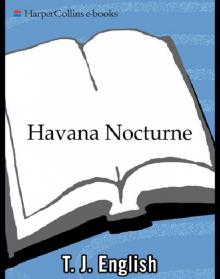 Havana Nocturne
Havana Nocturne Paddy Whacked
Paddy Whacked American Gangsters
American Gangsters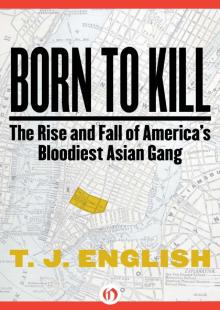 Born to Kill
Born to Kill Westies
Westies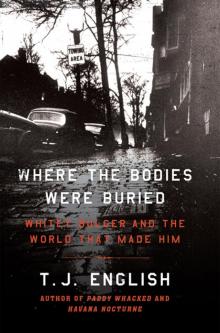 Where the Bodies Were Buried
Where the Bodies Were Buried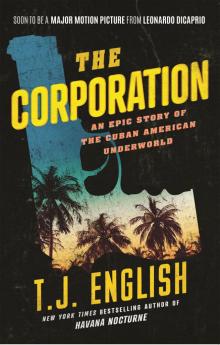 The Corporation
The Corporation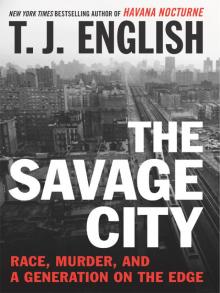 The Savage City
The Savage City